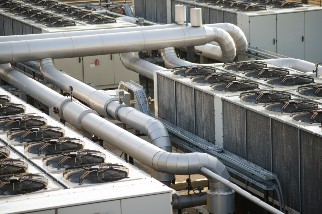Workplace air quality is something many people simply take for granted.
While some view ventilation as something that merely circulates air throughout a facility, it plays a key role in indoor air quality (IAQ) and, therefore, impacts worker health. In the short-term, poor IAQ is linked to illnesses and ailments such as headaches, dizziness and fatigue. Long-term exposure can lead to respiratory disease, heart disease and cancer.
“A well-designed ventilation system results in better health for our employees as well as reduced risk for workplace accidents,” says Terry Ketchum of the ANSI/ASSP Z9 Committee. “Ventilation provides workers with a continual supply of fresh outdoor air and protects them from heat stroke, while also reducing fire and explosion risks and exposure to airborne contaminants.”
What can you do to improve IAQ in a workplace? Here are three tips to keep in mind.
1. Know What to Look For
At first glance, improving IAQ may seem challenging. You are working to address a hazard that you can’t see. However, you can take several steps to identify issues related to your facility’s ventilation system. This is an opportunity to engage with your workers to gain their insights and learn about their IAQ concerns.
“A key component that’s often overlooked is documenting the nature of complaints concerning IAQ,” Ketchum says. “You need to document any complaints or issues brought to your attention, as well as the steps taken to remedy them.”
Start by asking workers if they find the workplace too dry or too humid. Assess whether they are experiencing any symptoms of poor IAQ, such as shortness of breath, coughing, nausea, hypersensitivity of allergies or sinus congestion. Documenting worker input can provide a foundation for identifying problems within your ventilation system and developing a plan for improvement.
2. Assess Your Current System
After you’ve documented worker feedback, you can take a deeper dive into assessing your ventilation. Start with a closer look at different system components. You can use a range of techniques to conduct this assessment, including:
- Performing IAQ sampling
- Identifying sources of air contamination such as mold or standing water
- Evaluating system maintenance records
- Measuring relative humidity, air temperature, air velocity and the presence of carbon dioxide, carbon monoxide, mold, particulates and volatile organic compounds
Ketchum notes that additional assessment measures could include examining the building layout to assess whether it allows the building to “breathe” and lets air to flow through properly. You should also confirm that your system brings in enough outdoor air and that the sensors controlling your heating, ventilation and air conditioning (HVAC) system are properly calibrated.
3. Plan, Collaborate, Monitor and Improve
Once you’ve assessed your system, you need to establish a plan to address any gaps. It’s crucial to understand the root causes of these gaps to prevent recurrence. Corrective measures could include simple measures such as calibrating sensors, optimizing economizer sequences or correcting airflow and water balance.
Other measures that can improve IAQ include cleaning equipment, performing routine inspections, conducting preventive maintenance and reviewing building occupancy. It is also important to periodically review building occupancy since the number of people within a workplace impacts how air flows through the facility.
Ketchum emphasizes the importance of change management throughout the ventilation planning process to account for any changes to the workplace. For example, you should eliminate practices that may restrict air movement such as furniture placement relative to air vents. Ketchum also suggests increasing ventilation rates during periods of increased pollution, such as when painting, cleaning, renovating and using pesticide.
To continually improve ventilation and IAQ, you should strive to collaborate with other departments.
“Ventilation is an art combined with a science,” says Ketchum. “Often we need others to help us in this evaluation and making judgments based on what the data is showing us.”
Key partners in improving IAQ include site management, maintenance staff, industrial hygienists and engineers who can help you develop a proactive plan to regularly assess your ventilation system to verify that it is operating at maximum efficiency and providing the best possible IAQ for your workforce.
Listen to our podcast with Terry Ketchum of the ANSI/ASSP Z9 Committee for further insights on improving IAQ at your workplace.
Understanding Risk Management and Assessment
We have the resources and expert guidance you need to improve how you assess risks to prevent hazards, protect workers and safeguard equipment.
Learn more